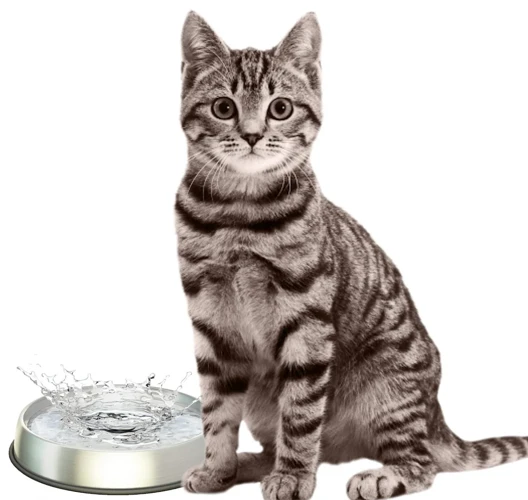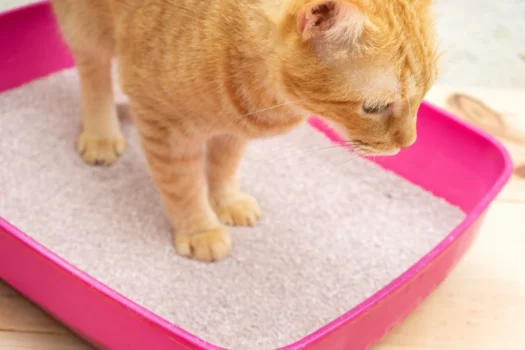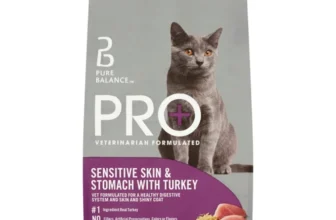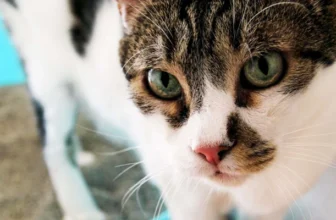Every pet parent dreads the possibility of their furry friend getting sick, and urinary tract infections are no exception. If you are a proud owner of an American Bobtail cat, you might be wondering how you can prevent these infections from happening. While there is no guaranteed way to avoid them entirely, there are several preventive measures you can take to minimize the risk. In this article, we will take a more in-depth look at urinary tract infections in American Bobtail cats, their symptoms and causes, and most importantly, how to keep your feline friend healthy and happy.
Understanding Urinary Tract Infections in American Bobtail Cats

Urinary Tract Infections (UTIs) can be a concerning health issue for American Bobtail cats. UTIs occur when bacteria enter the urinary tract, causing inflammation and irritation. As a pet owner, it’s important to understand the symptoms, causes, and risk factors associated with UTIs in American Bobtails, in order to prevent and treat this condition in a timely and effective manner. In the following sections, we will discuss the symptoms and causes of UTIs, as well as the preventive measures and treatment options available. For more information on the subject, take a look at our page on Understanding UTIs in American Bobtail Cats.
Symptoms of Urinary Tract Infections in American Bobtail Cats
Urinary tract infections (UTIs) in American Bobtail cats can cause discomfort and may lead to more serious health issues if left untreated. It’s important for pet owners to be aware of the symptoms so they can seek veterinary care as soon as possible. Below is a table listing some common symptoms of UTIs in American Bobtail cats.
| Symptom | Description |
| Urinating outside of the litter box | Due to pain or discomfort while urinating, your cat may start to avoid the litter box and urinate in other areas of the house. |
| Painful urination | Your cat may vocalize or exhibit signs of discomfort while urinating. |
| Frequent urination | Your cat may need to urinate more often than usual. |
| Blood in urine | UTIs can cause inflammation of the urinary tract, which may result in blood in your cat’s urine. |
| Lethargy | Your cat may seem less energetic and may sleep more than usual. |
| Loss of appetite | Due to pain or discomfort, your cat may eat less or stop eating altogether. |
| Cloudy or strong-smelling urine | UTIs can cause changes in the appearance and smell of your cat’s urine. |
It’s important to note that not all cats will exhibit every symptom of a UTI, so it’s crucial to seek veterinary care if you notice any changes in your cat’s behaviour or bodily functions. By taking swift action, you can help ensure that your cat receives prompt diagnosis and treatment, potentially preventing more serious health issues from developing. For more information about UTIs in American Bobtail cats, check out our article on UTIs in Bobtail Cats. If you’re concerned that your cat may have a UTI, be sure to seek veterinary care or read more about the diagnosis and treatment of UTIs in American Bobtail cats.
Causes of Urinary Tract Infections in American Bobtail Cats
Urinary tract infections (UTIs) in American Bobtail cats can be caused by a range of factors. Here are some common causes:
Bacterial Infection: The most common cause of UTIs in American Bobtail cats is a bacterial infection. Bacteria such as Escherichia coli and Staphylococcus can infect the urinary tract, leading to inflammation and discomfort.
Urethral Blockage: Sometimes, blockages in the urethra can cause UTIs in American Bobtail cats. This can be due to bladder stones, tumors, or even inflammation caused by mineralization of the urine.
Immune System Disorders: Immune system disorders that weaken the immune system of American Bobtail cats can make them prone to UTIs. These disorders include Feline Leukemia Virus and Feline Immunodeficiency Virus.
Genetics: Some American Bobtail cats may be genetically predisposed to UTIs. Certain breeds may be more prone to developing UTIs due to the structure of their urinary tracts.
Other Factors: Other factors, such as stress, obesity, and inadequate hygiene, can also contribute to UTIs in American Bobtail cats.
By understanding the causes of UTIs in American Bobtail cats, pet owners can take steps to prevent these infections and ensure that their furry friends stay healthy and happy. If you would like to learn more about the topic of UTIs in Bobtail cats, refer to our detailed article /utis-in-bobtail-cats/.
Risk Factors for Urinary Tract Infections in American Bobtail Cats
As a cat owner, it’s important to be aware of the risk factors that can increase the chances of your American Bobtail cat developing a urinary tract infection. These risk factors can include various environmental, behavioral, and medical factors. In this section, we’ll dive into some of the most common risk factors associated with Urinary Tract Infections (UTIs) in American Bobtail cats.
| Factor | Description |
|---|---|
| Gender | Male cats are more prone to urinary tract infections compared to female cats due to the longer and narrower urethra. |
| Age | Elderly cats are more susceptible to developing UTIs due to a weakened immune system and age-related health issues such as kidney disease and diabetes. |
| Obesity | Overweight cats are at higher risk of developing UTIs, as obesity tends to contribute to urinary tract problems. |
| Dehydration | Cats who don’t drink enough water or have limited access to clean water can develop UTIs due to concentrated urine that can cause irritation and lead to bacterial growth in the bladder. |
| Poor Diet | Cats who consume a diet high in carbohydrates and low in moisture can increase the risk of developing UTIs. A diet rich in moisture can help to promote proper urinary tract function. |
| Unhygienic Litter Box | Cats that use litter boxes that are unclean or have limited access to a clean litter box are at increased risk of developing UTIs. A dirty litter box can also lead to stress and anxiety, which can contribute to urinary tract problems. |
| Anxiety and Stress | Cats that experience high levels of anxiety and stress are more prone to developing UTIs. This is due to an increase in cortisol levels, which can lead to a weakened immune system, making the cat more susceptible to bacterial infections. |
| Medical History | Cats with a history of bladder stones, kidney disease, or other urinary tract problems are more likely to develop UTIs. |
These risk factors can increase the likelihood of your cat developing a UTI, and it’s important to take preventative measures to reduce the risk of infection. By understanding these risk factors, you can work with your veterinarian to develop a tailored preventative plan for your American Bobtail cat.
Preventive Measures Against Urinary Tract Infections in American Bobtail Cats

As a pet owner, it’s important to take preventative measures to ensure your American Bobtail cat’s health and well-being. One way to do this is by taking steps to prevent urinary tract infections (UTIs), which can cause discomfort and potentially serious health issues for your feline friend. By making a few simple changes to their diet and lifestyle, you can significantly reduce their risk of developing a UTI. In this section, we’ll discuss several precautionary steps you can take to keep your American Bobtail cat healthy and happy.
Dietary Changes
A significant preventive measure against urinary tract infections in American Bobtail cats is dietary changes. A cat’s diet plays a crucial role in their overall health and wellbeing, including their urinary tract health. Here are some dietary changes that can help prevent urinary tract infections in American Bobtail cats:
- Water Content: Ensure that your cat’s diet includes adequate water content. Increase hydration by serving wet food, adding water to dry food, or using a cat water fountain. Increased water consumption will help flush out the urinary tract and prevent the buildup of bacteria.
- Protein: Incorporate high-quality protein into your cat’s diet. This will help maintain a healthy pH balance in their urine and prevent the formation of crystals that can lead to urinary tract infections.
- Low Ash: Avoid cat food that is high in ash content. High ash content leads to the formation of crystals in cat urine, which can increase the likelihood of urinary tract infections.
- High Moisture: Choose cat food that contains high moisture content. High moisture content helps to flush out the urinary tract and prevent bacteria build-up, reducing the chances of urinary tract infections.
- Controlled Phosphorus: Control the amount of phosphorus in your cat’s diet. Too much phosphorus leads to the formation of crystals in cat urine, which can increase the likelihood of urinary tract infections.
Switching your cat’s diet to include these changes can significantly reduce the risk of urinary tract infections in American Bobtail cats. It’s essential to ensure your cat’s diet matches their nutritional needs and is suitable for their urinary tract health.
Increased Hydration
One of the most important preventive measures against urinary tract infections (UTIs) in American Bobtail cats is increased hydration. Dehydration can lead to a variety of health problems for cats, including UTIs. To keep your cat well-hydrated and prevent UTIs, consider the following:
- Provide plenty of fresh water: Make sure your cat always has access to fresh, clean water. You can provide multiple water bowls throughout your home to encourage your cat to drink more.
- Offer wet food: Wet cat food can provide extra hydration for your cat. Consider switching to a high-quality wet food or adding some water to your cat’s dry food to increase their daily water intake.
- Invest in a pet fountain: Some cats are attracted to running water and may be more likely to drink from a pet fountain. These devices circulate and filter water, encouraging cats to drink more.
- Add flavor to water: Consider adding water flavorings to your cat’s drinking water. Some cats prefer the taste and may be more likely to drink more.
- Monitor water intake: Keep an eye on your cat’s water intake to ensure they are drinking enough. A good rule of thumb is that cats should drink approximately 1 ounce of water per pound of body weight per day.
By taking steps to increase your cat’s hydration, you can help prevent UTIs and promote overall health and well-being. However, it is important to remember that increased water intake alone may not be enough to prevent or treat a UTI. If you suspect your cat has a UTI, it is important to seek veterinary care.
Frequent Litter Box Cleaning
One of the most important preventive measures against urinary tract infections in American Bobtail cats is frequent litter box cleaning. This is because dirty litter boxes can be a breeding ground for bacteria, which can easily spread to your cat’s urinary tract. Cleaning your cat’s litter box at least once a day can significantly decrease the risk of infection.
To keep your cat’s litter box clean, follow these steps:
- Scoop the box at least once a day: Use a cat litter scoop to remove any clumps and solid waste from the litter box. Dispose of the waste in a plastic bag and seal it tightly before throwing it in the trash.
- Wash the litter box regularly: Use mild soap and warm water to clean the litter box thoroughly. Rinse it with clean water and let it dry completely before adding fresh litter.
- Replace the litter: Dump out the old litter and replace it with fresh, clean litter at least once a week. This will not only keep the box clean and fresh but also prevent the buildup of bacteria.
- Use the right litter: Some cats are sensitive to certain types of litter, while others prefer a particular texture. Experiment with different types of litter to find out what your cat prefers, and stick to it as much as possible. Make sure the litter you choose is also easy to clean and dispose of.
By keeping your cat’s litter box clean and fresh, you can significantly reduce the risk of urinary tract infections. However, remember that frequent litter box cleaning is just one of several preventive measures. To ensure your cat stays healthy, you must also make dietary changes, increase hydration, reduce stress levels, and use supplements and medications when necessary.
Stress Reduction
Stress can be a major contributor to urinary tract infections in American Bobtail cats. Stress can weaken the immune system, making it easier for bacteria to thrive and cause an infection. It is important to try to reduce stress in your cat’s environment as much as possible. Here are a few ways to help reduce stress in your American Bobtail cat:
| Technique | Description |
|---|---|
| Aromatherapy | Using essential oils like lavender and chamomile can have a calming effect on cats. Simply add a few drops to a diffuser or spray bottle and use as needed. |
| Play Time | Giving your cat plenty of opportunities to play and exercise can help reduce stress. Use interactive toys like feather wands or puzzle feeders to keep your cat engaged and mentally stimulated. |
| Quiet Spaces | Creating a quiet space where your cat can retreat to can help reduce stress. Provide a cozy bed, some toys, and a scratching post in a secluded area away from noisy household activities. |
| Calming Supplements | Supplements like CBD oil or calming chews can help reduce anxiety and stress. Be sure to talk to your veterinarian before giving your cat any supplements to ensure they are safe and effective. |
Reducing stress in your American Bobtail cat not only helps prevent urinary tract infections but also promotes overall health and happiness. It is important to create a calm and peaceful environment for your furry friend to thrive in.
Supplements and Medications
Having a urinary tract infection can be quite uncomfortable for your American Bobtail cat. It is important to take preventive measures by keeping your pet hydrated and maintaining proper hygiene. However, there are supplements and medications that can be given to your furry friend to prevent and treat urinary tract infections.
Supplements:
Supplements can be given to your American Bobtail to help prevent urinary tract infections. Some of the recommended supplements include:
| Supplement | Benefits |
|---|---|
| Cranberry Extract | Help prevent bacteria from attaching to the bladder walls, reducing the risk of infection. |
| D-Mannose | Helps to prevent bacteria from attaching to the bladder walls and flushes out any bacteria that might be present in the urinary tract. |
| Probiotics | Introduce “good” bacteria into the gut and urinary tract, making it more difficult for “bad” bacteria to grow and cause infection. |
Medications:
If your American Bobtail does develop a urinary tract infection, your veterinarian may suggest the following medications:
| Medication | Benefits |
|---|---|
| Antibiotics | Kill bacteria in the urinary tract to cure the infection. |
| Pain Relief | If your cat is in pain, your veterinarian may prescribe pain relief medication to make them more comfortable. |
| Anti-Inflammatory Drugs | Reduce inflammation in the urinary tract, making it easier for your cat to urinate. |
It is important to note that supplements and medications should only be given to your American Bobtail under the guidance of a veterinarian. Giving your cat the wrong type or amount of medication can be harmful to their health.
Treatment of Urinary Tract Infections in American Bobtail Cats
When a urinary tract infection (UTI) is suspected in an American Bobtail cat, prompt treatment is necessary to prevent the infection from spreading and causing further complications. Left untreated, UTIs can progress into serious kidney problems or bladder stones. In this section, we will discuss both veterinary diagnosis and treatment options, as well as home remedies that can help treat UTIs in American Bobtail cats. It is important to note that while home remedies can be helpful, they should never replace veterinary care and advice.
Veterinary Diagnosis and Treatment
When it comes to treating urinary tract infections in American Bobtail Cats, it is crucial to consult a veterinarian for proper diagnosis and treatment. Here are the steps involved in veterinary diagnosis and treatment:
| Step | Explanation |
|---|---|
| Physical examination | The veterinarian will conduct a thorough physical examination to check for signs of pain or discomfort in your cat’s lower abdomen or urinary tract. |
| Urinalysis test | A urinalysis test will be conducted to check for the presence of blood or bacteria in your cat’s urine. This will help confirm the diagnosis of a urinary tract infection. |
| Blood tests | Blood tests may be ordered to check if the infection has spread to the bloodstream. This will help the veterinarian evaluate the severity of the infection and determine the best course of treatment. |
| Antibiotics | The most common treatment for urinary tract infections in cats is a course of antibiotics prescribed by the veterinarian. The type and duration of the treatment will depend on the severity of the infection. |
| Follow-up appointments | The veterinarian will schedule follow-up appointments to monitor your cat’s progress and ensure that the infection has cleared up completely. In some cases, a second course of antibiotics may be necessary. |
It is important to follow the veterinarian’s instructions carefully when administering antibiotics. Overuse or incorrect use of these medications can lead to antibiotic resistance or secondary health problems. It’s also important to note that untreated urinary tract infections can lead to serious health complications in American Bobtail cats, so don’t hesitate to seek veterinary care if you suspect your cat has a urinary tract infection.
Home Remedies for Urinary Tract Infections in American Bobtail Cats
If your American Bobtail cat is suffering from a urinary tract infection, you may be wondering if there are any home remedies that can help alleviate their symptoms. While it’s always recommended to seek veterinary care for your feline friend, some home remedies may aid in their recovery. Here are some options:
- Cranberry extract: Cranberry extract can help acidify the urine and prevent bacteria from adhering to the urinary tract walls. You can give your cat cranberry extract in capsule form or mix it with their food.
- Apple cider vinegar: Adding a small amount of apple cider vinegar to your cat’s water bowl may help clear up their urinary tract infection. This is because apple cider vinegar has antibacterial properties and can help regulate pH levels in the urinary tract. However, make sure to dilute the vinegar with water before offering it to your cat.
- D-Mannose: D-Mannose is a type of sugar that can prevent bacteria from sticking to the urinary tract walls. You can give your cat D-Mannose in powder or capsule form.
- Herbal remedies: Some herbs, such as uva ursi and goldenseal, are believed to have antimicrobial properties that may help treat urinary tract infections. However, it’s important to consult with a veterinarian before giving your cat any herbal remedies, as some can be toxic to felines.
- Probiotics: Probiotics can help boost your cat’s immune system and prevent the growth of harmful bacteria in the urinary tract. You can give your cat probiotics in capsule form or mix them with their food.
It’s important to note that while home remedies may help alleviate your cat’s symptoms, they should not be used as a substitute for veterinary care. If your cat is experiencing symptoms of a urinary tract infection, it’s crucial to seek medical attention to properly diagnose and treat the issue.
Conclusion
After learning about the symptoms, causes, and preventive measures for urinary tract infections in American Bobtail cats, it is clear that this is a serious and potentially life-threatening condition. As such, it is important for cat owners to take proactive steps to ensure the health and wellbeing of their pets.
One of the most important steps in preventing urinary tract infections is to maintain a healthy diet for your cat. This means providing them with high-quality, protein-rich foods that are free from artificial additives and preservatives. Additionally, adding supplements like cranberry to their diet can help to reduce the risk of bacteria buildup in the urinary tract.
Increased hydration is also essential in preventing urinary tract infections. Ensure that your cat has access to fresh water at all times, and consider adding wet food to their diet to increase their overall fluid intake.
Proper litter box maintenance is another key factor in preventing urinary tract infections. This means cleaning the litter box regularly and providing your cat with clean, fresh litter on a consistent basis. Additionally, ensuring that your cat has access to multiple litter boxes can help to reduce stress and anxiety, which can exacerbate the risk of urinary tract infections.
Stress reduction is another important measure in preventing urinary tract infections in American Bobtail cats. This can be achieved by providing your cat with a calm and secure environment, with plenty of places to hide and relax. Additionally, engaging in frequent play sessions with your cat can help to reduce their stress levels and prevent the onset of urinary tract infections.
In the event that your American Bobtail cat does develop a urinary tract infection, it is important to seek veterinary care immediately. Your vet will be able to diagnose the infection and recommend the appropriate course of treatment, which may include medications or home remedies such as a dietary change or the addition of supplements.
By taking these preventive measures and seeking prompt treatment when necessary, cat owners can help to ensure the long-term health and wellbeing of their American Bobtail cats.
Frequently Asked Questions
1. Can urinary tract infections be prevented in American Bobtail Cats?
Yes, urinary tract infections can be prevented in American Bobtail Cats by maintaining a healthy diet, increasing hydration, frequent litter box cleaning, and reducing stress.
2. What are some symptoms of urinary tract infections in American Bobtail Cats?
Some symptoms of urinary tract infections in American Bobtail Cats are difficulty or pain while urinating, blood in urine, frequent urination or accidents outside the litter box, and an increase in licking genital area.
3. What are the causes of urinary tract infections in American Bobtail Cats?
The causes of urinary tract infections in American Bobtail Cats can be bacterial infections, inflammation of the urinary tract, blockage of the urinary tract, or even bladder stones.
4. What are the risk factors for urinary tract infections in American Bobtail Cats?
The risk factors for urinary tract infections in American Bobtail Cats are obesity, advanced age, kidney disease, diabetes, and a weakened immune system.
5. How can dietary changes help prevent urinary tract infections in American Bobtail Cats?
Dietary changes can help prevent urinary tract infections in American Bobtail Cats by feeding them wet food, which can increase their water intake and decrease the concentration of minerals in their urine.
6. Why is increased hydration important in preventing urinary tract infections in American Bobtail Cats?
Increased hydration is important in preventing urinary tract infections in American Bobtail Cats because it dilutes the concentration of minerals in their urine which can lead to bladder stones and blocks.
7. How often should the litter box be cleaned to prevent urinary tract infections in American Bobtail Cats?
The litter box should be cleaned at least once a day to prevent urinary tract infections in American Bobtail Cats, and the litter should be changed completely once a week.
8. How can stress reduction prevent urinary tract infections in American Bobtail Cats?
Stress reduction can prevent urinary tract infections in American Bobtail Cats by decreasing the production of cortisol, a hormone that can increase inflammation in the urinary tract.
9. What supplements or medications can be used to prevent urinary tract infections in American Bobtail Cats?
Cranberry supplements or D-mannose supplements can be used to prevent urinary tract infections in American Bobtail Cats. Antibiotics may also be prescribed by a veterinarian if an infection is present.
10. Is veterinary diagnosis and treatment necessary for urinary tract infections in American Bobtail Cats?
Yes, veterinary diagnosis and treatment is necessary for urinary tract infections in American Bobtail Cats because untreated infections can lead to more severe conditions such as kidney disease, bladder stones, or even fatal blockage of the urinary tract.







